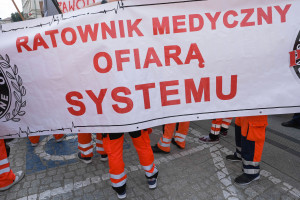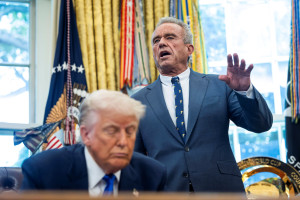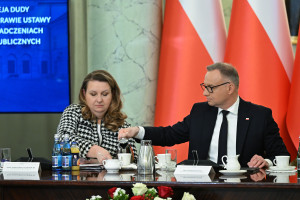Trump Announces Regulatory Revolution: Relief for Domestic Drugmakers in the US

- Donald Trump Signs Executive Order on Regulatory Relief to Promote Domestic Production of Critical Medicines
- - New buildings must meet a myriad of federal, state and local requirements, from building codes and zoning restrictions to environmental protocols, which together discourage investment in large manufacturing projects, the US president noted.
- This is set to change. Offices are to eliminate any duplicate or unnecessary requirements in regulations and guidelines
- Official checks are to be quick, efficient and limited to what is necessary to ensure compliance with regulations
- In turn, the new law provides for strengthening control over foreign production plants.
On May 5, President Donald Trump signed an executive order providing regulatory relief to promote domestic production of critical medicines.
During his first term, the administration took “unprecedented steps” to restore domestic production capacity for key pharmaceutical products, he said. That included increasing domestic procurement of essential critical medicines and medical supplies and identifying gaps in the country’s supply chains for those products.
"Unfortunately, the previous administration did too little to achieve these goals. Critical barriers and gaps remain in establishing a domestic, resilient, and affordable pharmaceutical supply chain for American patients," Trump said.
One area of concern identified is the time it takes to build pharmaceutical manufacturing facilities in the U.S. New buildings must meet a myriad of federal, state and local requirements, from building codes and zoning restrictions to environmental protocols, which together discourage investment in large manufacturing projects.
In the case of pharmaceutical manufacturing, these barriers are exacerbated by unannounced FDA inspections of domestic manufacturers, which are more frequent than those of international facilities.
Trump cited industry estimates that building new production capacity for drugs and critical raw materials could take five to 10 years. Even expanding or modifying existing production lines requires extensive regulatory approvals and permits.
Factory inspection is to be quick and limited to what is necessary"It is in the nation's interest to eliminate regulatory barriers to domestic production of the medicines Americans need. My administration will work to make the United States the most competitive country in the world in producing safe and effective medicines," the president said.
The actions included in the regulation include new tasks for the FDA. The agency is to review existing regulations and guidelines for the development of domestic pharmaceutical production to eliminate any duplicate or unnecessary requirements in regulations and guidelines.
Red tape will also be reduced in the approval of new and expanded manufacturing capabilities and emerging technologies that enable the production of drugs, active ingredients, key starting materials, and raw materials in the United States.
FDA inspections of plants are to be quick, efficient and limited to what is necessary to ensure compliance. Officials are to take steps to provide early technical advice before a facility is operational. There are also to be facilities to facilitate the transfer of production locations, including from a foreign facility to a domestic facility.
The regulation also includes strengthened inspections of foreign manufacturing facilities. The FDA is to develop and implement an improved inspection system that will provide routine reviews of foreign plants. These increased inspections are to be financed through fees imposed on facilities. It also introduces central coordination of environmental permits to speed up the review and approval of permits for drug manufacturing facilities.
Copyrighted material - reprint rules are specified in the regulations .
rynekzdrowia











